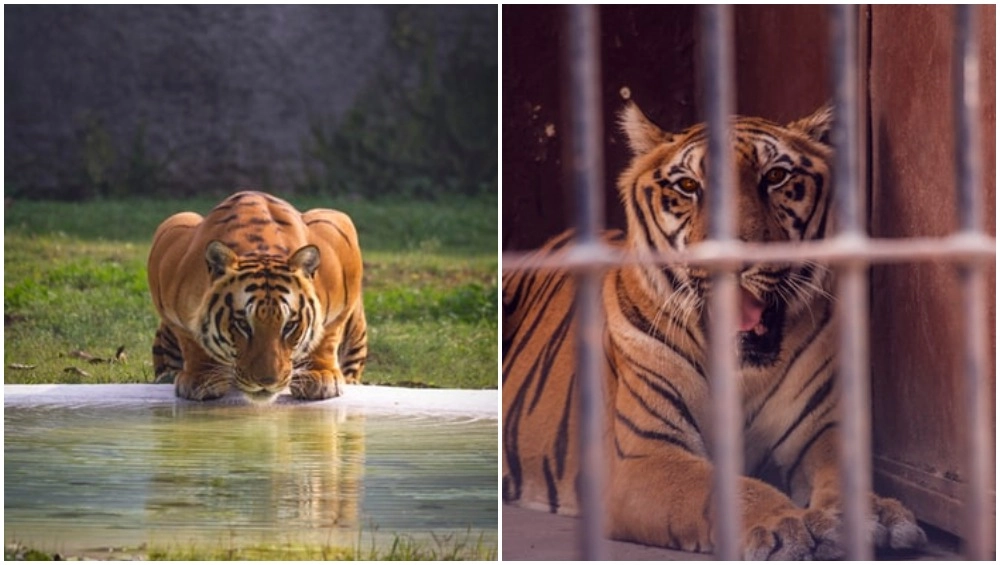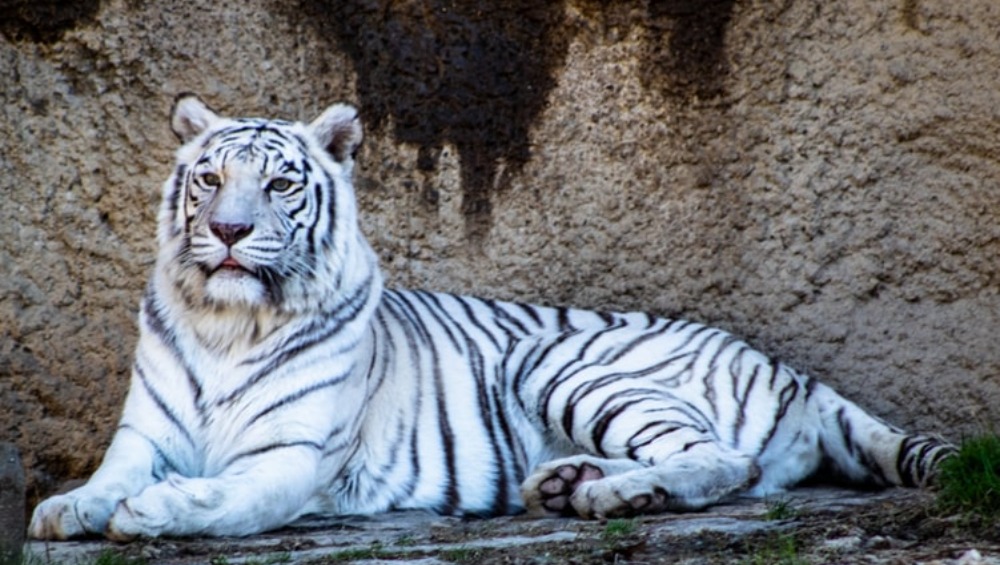International Tiger Day is an annual celebration to raise awareness about reducing tiger population and its conversation. The day aims at promoting a global system for protecting the natural habits of tigers and creating awareness among the general public about tiger conservation. It was created at the Saint Petersburg Tiger Summit in 2010 and is observed every year on July 29. International Tiger Day 2019 will witness various events and observances across countries promoting awareness about why tigers need to be protected. And as we observe the day, we compiled a list of facts about the third-largest carnivore on land. Tiger Chases Bikers in Kerala’s Wayanad, Viral Video Scares Netizens.
The major reason for the reducing population of tigers is human intervention. While national parks and reserves along with the government try to protect these big cats, they continued to be hunted down for monetary purposes. According to 2014 tiger census, the total number of striped big cats in India is at 2226 while the 2010 census put the figure at 1706 and the 2006 version at 1411. It suggests that the population is increasing. According to the World Wife Fund (WWF), the tiger population in the wild has recovered and currently there are now 3890 tigers are left in the wild across countries. World's Largest Cat, a Lion-Tiger Cross Breed Weighs 319 Kgs!

Here Are Some Important Facts About Tigers, The Fur-ocious Felines
1. Tigers can grow upto a length of up to 3.3 metres and weigh around 300 kilograms. They can easily jump over five metres in length. The Sumatran tiger is the smallest, with males only weighing up to 140kkg. Generally, females weigh less than males in all subspecies. They live upto 14 years of age.
2. It is estimated that only one in every 20 hunt attempts become successful.
3. Many subspecies of the tiger include the Sumatran Tiger, Siberian Tiger, Bengal Tiger, South China Tiger, Malayan Tiger and Indochinese Tiger. Of which many are either endangered or already extinct.
4. Tiger subspecies are considered the national animals of Bangladesh, India, North Korea, South Korea and Malaysia.
5. No two tigers have the same stripes. Every tiger has a completely different stripe pattern just like human fingerprints. The colour, length and breadth are also different in each one of them. Tigers are the only cat species which are completely stripped. They even have stripes on their skin. But the density of stripes varies by subspecies. The stripes on a Sumatran tiger are closer than compared to other subspecies. Royal Bengal Tigers Becoming Extinct! Big Cats In Sunderban May Not Survive Global Warming, Says UN Report.
6. Around half of tiger cubs don't live beyond two years of age. And tiger cubs leave their mother when they are around two years of age.
7. Tigers do not live in permanent groups as lions do. They live solitary lives except for the times when they are raising cubs. A group of tigers is a called ambush or streak. Tigers that breed with lions gives birth to hybrid cubs known as tigons and ligers.

Tigers are a keystone species which are integral to the health of the ecosystems. Being apex predators, they keep prey species under control and protects the vegetation. In turn, it withholds the forests that provide people with clean air, water, food and other forest produce. Hence when we protect tigers, we protect ourselves.
(The above story first appeared on LatestLY on Jul 29, 2019 08:30 AM IST. For more news and updates on politics, world, sports, entertainment and lifestyle, log on to our website latestly.com).













 Quickly
Quickly


